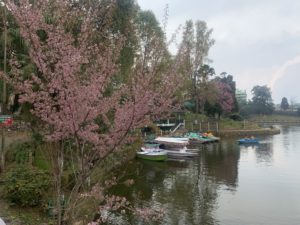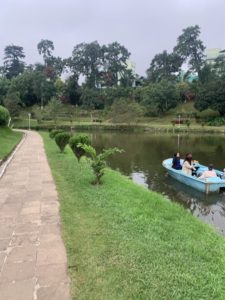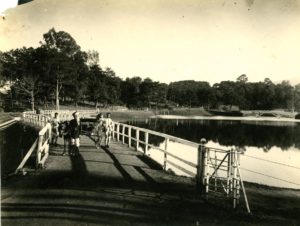By Nurul Islam Laskar

According to my mother’s descriptions, our rented house in Laitumkhrah lay between the Arbuthnot Road and Goraline-Umpling area in the eastern fringe of Shillong of those days. The population of Shillong which is estimated at approximately five lakh today, according to records, was only 63,000 in 1952. The owner of our rented house was one Kshirode Deb, a petty contractor then, who rose to become a well-known builder in later years and was associated with the construction of the AG Office building located close to the Raj Bhawan in Shillong.
As a toddler, I was now taken out for short walks. Sometimes my father would hold me in his hands and we would go all the way to Ward’s Lake. Shillong roads were neither crowded nor congested like today. We would go up till Don Bosco Square, and then take the Jacob’s Ladder to reach the Lake within a few minutes.
Ward’s Like is like a brand sign for Shillong. The establishment of this lake was planned by the then Chief Commissioner of Assam, Sir William Ward. Construction was done by Colonel  Hopkinson in the year 1894. There is a story prevalent among the Khasi people about one Jismot Chyne, a Khasi prisoner who was brought from Jaintia Hills and kept in custody in the Shillong Jail. He wanted some exercise as he was feeling bored doing nothing inside the jail. He was given a piece of land for the purpose of digging only. It is said that after a few days he discovered water gushing out and the incident was brought to the notice of the jail authorities. On examining the site, Col. Hopkinson had given orders for the excavation of the artificial lake. The work was immediately executed by Pollock. When the construction work was in progress, Ward had taken over charge from Hopkinson and later Ward had made the lake progressively more artistic and beautiful by giving it a much more aesthetic look, which was completed during 1893-94, during Ward’s second stint as Chief Commissioner of Assam.
Hopkinson in the year 1894. There is a story prevalent among the Khasi people about one Jismot Chyne, a Khasi prisoner who was brought from Jaintia Hills and kept in custody in the Shillong Jail. He wanted some exercise as he was feeling bored doing nothing inside the jail. He was given a piece of land for the purpose of digging only. It is said that after a few days he discovered water gushing out and the incident was brought to the notice of the jail authorities. On examining the site, Col. Hopkinson had given orders for the excavation of the artificial lake. The work was immediately executed by Pollock. When the construction work was in progress, Ward had taken over charge from Hopkinson and later Ward had made the lake progressively more artistic and beautiful by giving it a much more aesthetic look, which was completed during 1893-94, during Ward’s second stint as Chief Commissioner of Assam.

In the early years, the lake was known as “Hopkinson’s Tank”. Many Khasi people still call the lake after the Executive Engineer, Fitzwilliam Thomas Pollock as “Nan Palok.”
Going back a little more into the history of Shillong would be useful. Back in 1874, a separate Chief Commissionership was formed with Shillong as the seat of administration. The new administration included Sylhet, now a part of Bangladesh. Also included in the Chief Commissionership were the Naga Hills (present-day Nagaland), Lushai Hills (present-day Mizoram) as well as Khasi, Jaintia, and Garo Hills. Shillong was the common capital of composite Assam till 1969 when the autonomous state of Meghalaya was formed. In January 1972 Meghalaya was made a full-fledged state.



